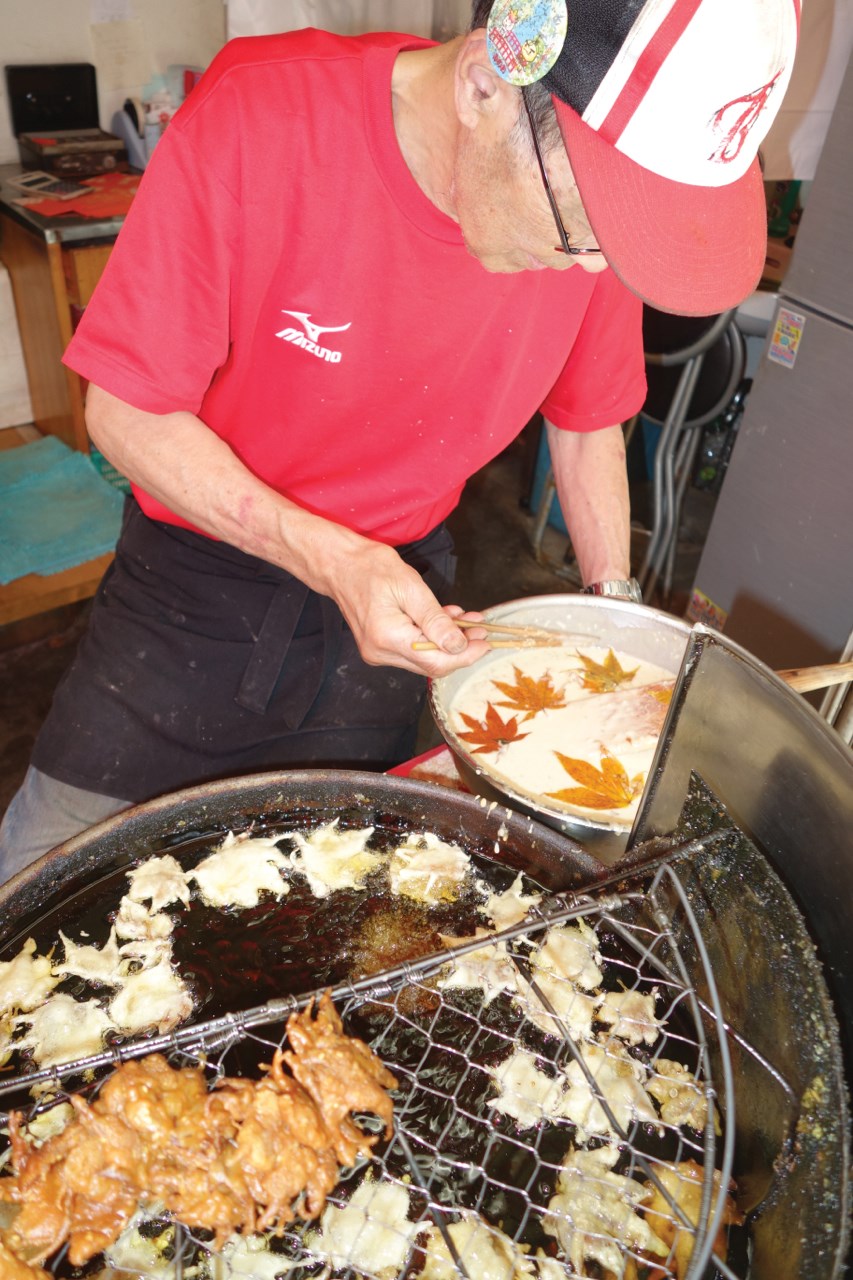You can eat Canada’s national emblem when you visit Osaka’s Mino suburb and mountain park.
As you start the 40-minute walk up into the park, before you leave the town area you can watch several local shops deep-frying small maple leaves in sweet batter to create maple leaf tempura, a popular tourist treat. The maple leaf’s fall colours are a major attraction.
Welcome to the Osaka you never knew existed. Please expect – and be delighted by – the unexpected.
Especially during my exploration of the Osaka Prefecture countryside, I rarely saw any other Westerners. But the Japanese were always helpful, even if they couldn’t speak much English.
Takeaway tips at ryokan-onsen hot springs Japanese-style hotels:
Never wear shoes in most indoor areas; watch what other people do. But you can wear the provided yukata – a light cotton kimono – everywhere inside the ryokan.
Your room usually has its own basin and wash toilet (the diagrams are fairly clear even if the instructions are in Japanese; some toilets offer a “blow dry” feature, others light up, most have a heated seat – and toilet paper is always provided as a default option).
Unless you have a private shower and tub, you wash in public, separate male-female communal shower areas (some don’t allow tattoos) before soaking in communal hot springs indoor and outdoor baths.
Breakfast and dinner are included – usually served in your room although breakfast, especially if it’s a buffet, is normally in a common dining room. The food is mostly Japanese meat-fish-veg-soup-rice in small, often unfamiliar but tasty dishes.
You sleep on a futon bed made up every night on the tatami (straw) matting floor.
Remember to bow frequently whenever you meet or leave people; regularly repeat “thank you very much” – arigatou gozaimasu (go-zigh’-ee-mas – the “u” is silent); don’t tip.
Staying local, I set off for a so-called waterfall meditation at the Inunakisan-Shipporyuji Temple, at Mt. Inunaki in the southern Osaka countryside. But that turned out to be a steep ropes-and-chains 558m climb up to a temple over loose rocks, slippery leaves and twisted roots, and then being hung head-first over the edge of a precipice.
After the descent, I used chains again to scale a steep, slippery waterfall for a special blessing.
What did it all feel like? Challenging, rewarding, a wonderful combination of the physical, intellectual, emotional and spiritual – all in a nature setting in a foreign country. Unforgettable.
The sense of tradition, that everything has a place and a reason, the pride in work and most important the mutual respect – these are the things that really matter … even if I hadn’t learned how to say much more than arigatou gozaimasu.
The Osaka Convention and Tourism Bureau has excellent attraction and accommodation suggestions at www.osaka-info.jp
For the “waterfall meditation” challenge, go to www.inunakisan.jp and look for the envelope symbol to send an email to reserve/register and receive information in English.
Mike Grenby teaches journalism at Bond University on Australia’s Gold Coast – [email protected]



